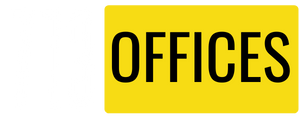
Transferring to a new workplace location is just as time-consuming as relocating to a new home. You’re dealing with large, heavy furniture, tricky-to-pack technology, and many rooms’ worth of knick-knacks. And, in most cases, there isn’t much time to complete the task (you can’t really shut down operations for a week to straighten things out). A move of an office is a significant undertaking, regardless of the size of your business. If you’re attempting to navigate one, the following suggestions will help make the experience as painless as possible.
Prepare ahead of time
When it comes to shifting to a new office location, there is no such thing as “winging it.” You must begin the planning process early, allocating who will do what, how they will accomplish it, and when it will be completed. Otherwise, you may find yourself scrambling at the last minute, and nobody likes to spend an entire night at the office stuffing staplers into boxes or figuring out how to carry a dozen large printers. Along with preparing how you’ll prepare for moving day, you’ll want to have a strategy in place for how you’ll organize your belongings once you get at your new office space. Utilize a blueprint to plan the layout of your workplace and common areas, as well as any additional requirements that may arise. Allow at least a few months to plan your workplace move effectively, and another couple of months to really have everything set up and ready to go. And don’t forget to budget for your move ahead of time—critical it’s to know how much money you have available.
Appoint a relocation manager
Even if you’re dividing the labor, it’s critical to have a dedicated relocation manager who can coordinate and monitor each stage to ensure that everything goes as planned. Typically, an administrative assistant is the ideal candidate for this position, but you may also opt to hire someone with prior expertise with commercial relocations.
Conduct research to locate the most reputable moving business.
We usually recommend conducting research and obtaining estimates from at least three competent moving firms before to arranging your move, but because an office relocation may quickly become extremely expensive, you’re best off looking at a few more. If you have the means for it, consider hiring a full-service moving company—they will handle all packing, loading, unloading, and unpacking for you. Consult with friends and family for suggestions of moving firms with expertise with office relocations, since you’ll want to ensure that you pick a business with an established track record of success in this field. To obtain the most accurate price, invite a representative from each firm to your workplace to inspect the extent of work. With these kind of assignments, simply describing what has to be done over the phone is insufficient.
Any commercial relocation firm you choose should be licensed and insured. For a validated list of reliable movers, see our moving business directory.
Assign each person the responsibility of packing up their own workstation.
While you may be hiring a moving company to handle the heavy lifting, it will still be beneficial for everyone to be accountable for their own working area. Give your workers advance notice of the deadline for packing up their desks, and urge them to do so in small increments so that nobody is rushing to have everything packed away at the last minute. You may just need to give your employees a couple of hours off the day before the relocation to organize their workstations.
Don’t forget about information technology.
Disconnecting and reconnecting all of your technology is one of the most time-consuming aspects of transferring to a new office location. As soon as you have a firm date for your move, consult with your information technology department to develop a strategy for relocating all of your office’s technical equipment. This includes personal computers, servers, and smartphones, as well as data and internet services. This is a large project that you cannot outsource to the movers, therefore it is important that your staff begins working on it immediately. If you’re getting rid of equipment, make a strategy for recycling or donating it. Human-IT, Computers with Causes, and the National Cristina Foundation are all non-profit groups that take donated technology and provide it to those in need. In other instances, the equipment may not even need to be in functioning order. If you’re intending to recycle surplus equipment instead, see the EPA’s resources for information on where and how to properly dispose of it.
Acquire a firm grasp of building regulations
Unless your firm owns the building you are transferring from or into, you will need to obtain a comprehensive analysis of all applicable building codes. It is possible that you are only permitted to move during non-business hours or that using the service elevator requires a specific request. Ascertain these guidelines as soon as possible from building management, since they will influence the logistics of moving day.
Put in place address change orders
It is preferable to begin updating papers with your new address sooner rather than later, so place orders for new business cards, letterhead, envelopes, and return labels immediately upon learning your new address. Ensure that you inform your consumers as well, especially if they send you items on a regular basis. It is far preferable to have all of your updated papers on hand before to your relocation than to risk being without them for days or weeks in your new home.
Label your boxes meticulously.
Labeling your boxes is critical for any relocation, but it is extremely critical when transferring to a new workplace. To ensure that operations continue to operate smoothly before and after the relocation, you’ll want to properly mark each box to ensure that items such as more printer paper or toner are located only when they’re truly needed. To maximize efficiency, mark each box with a location and a number and maintain a matching spreadsheet that details the contents of each box. It’s a little more work, but it will save you a lot of time as you settle into your new location and will be easily accessible to everyone.
Ascertain that everything will fit.
While you may like to carry your large breakroom refrigerator with you, the proportions of your new breakroom’s kitchen area may preclude this. Rather than spending time, energy, and money hauling goods that will not fit in your new office space, measure your largest objects and compare them to the dimensions of your new site. This includes conference room tables, huge electrical equipment, and anything else that requires a significant amount of space. Hopefully, you’ve selected a new workplace that accommodates your current furniture and technology, but if not, you’ll want to know before you move in—not after.
Initially, attempt to relocate some non-essential items on your own.
Simplify moving day by transferring as little as possible, assuming that the timing of your new lease overlaps. You may simplify the entire moving process by taking over goods such as plants and bulk office supplies on your own, especially if you can get them established in their new places before you move in formally.
